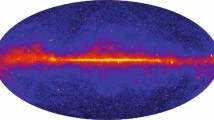
Access this book
Tax calculation will be finalised at checkout
Other ways to access
About this book
Similar content being viewed by others
Keywords
Table of contents (24 chapters)
-
Front Matter
-
Introductory Remarks
-
Galactic Sources
-
Front Matter
-
-
Theoretical Models for Compact Sources
-
Front Matter
-
-
Extragalactic Sources
-
Front Matter
-
Editors and Affiliations
Bibliographic Information
Book Title: X- and Gamma-Ray Astronomy
Editors: H. Bradt, R. Giacconi
Series Title: International Astronomical Union Symposia
DOI: https://doi.org/10.1007/978-94-010-2585-0
Publisher: Springer Dordrecht
-
eBook Packages: Springer Book Archive
Copyright Information: International Astronomical Union 1973
Softcover ISBN: 978-90-277-0337-8Published: 31 March 1973
eBook ISBN: 978-94-010-2585-0Published: 06 December 2012
Series ISSN: 1743-9213
Series E-ISSN: 2352-2186
Edition Number: 1
Number of Pages: 333
Number of Illustrations: 28 b/w illustrations



